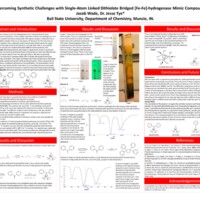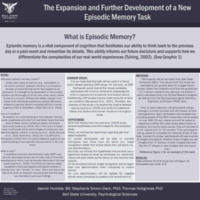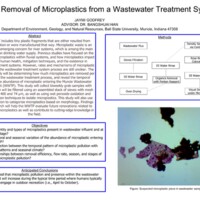Browse Exhibits (109 total)
Gandzhina Dustova | The Importance of Daylight in Classrooms and Its Influence on Students

Not everyone detests classrooms without windows. However, it is important to realize that significant changes and improvements have been made to the daylight. Benefits of classrooms without windows reported in previous studies include that occupants can use more space for bulletin boards and bookcases, more artificial lighting levels, less noise, lower maintenance costs, and freedom from students' distractions. However, there are many examples in many previous studies that students have better learning skills in classrooms with daylight.
Daylight is a very necessary element for students to achieve their academic abilities, and it is an important factor to students to receive natural light when designing an educational space. Previous studies emphasize light, temperature, air quality and color affect classroom space. While various factors affect students' academic performance, the impact on learning progress in an environment which has the quality of daylight is significant.
The effects of daylight on the classroom are various. One of them is the study of attendance or absenteeism. A number of studies has been conducted to analyze the relationship between students' attendance rates in classrooms with sufficient daylight and those with insufficient daylight. Schools incorporating natural light show higher student and teacher attendance than schools depend on artificial lighting.
Faculty Mentor: Dr. Jake Son
Educational Studies
Graduate
Hunter Wallace, Luke Holliday, Chase Watkins, Nathaniel Barber | 24x7 System Monitoring

The 24x7 System Monitoring project revolves around the concept of monitoring API status calls and being able to alert a user via text/email if a certain conditional is triggered. This eliminates the responsibility of someone being up overnight to watch certain business processes happen and can instead just be alerted when an alert is received. The software is completely customizable and can accept any API call and be displayed in a simple and easy-to-read dashboard.
Faculty Mentor: Dr. Huseyin Ergin
Computer Science
Undergraduate
Ian Roesler | The Texas Chain Massacre, Cannibalism, and Hillbilly Horror

This is a presentation about the Texas Chain Saw Massacre.
Faculty Advisor: Dr. Emily Rutter
Department of English
Undergraduate
Isabelle Wright | Olfactory Recognition in Brain Glycogen Knockout Mice

Glucose stored in the brain as the branched polysaccharide glycogen has been reported to play a role in associative learning. The effect of brain glycogen levels on sensory learning in mus musculus is rarely studied and, as a model species for human studies, has implications for learning in people, especially those experiencing low glucose availability to the brain. Wild-type mice and mice without brain glycogen were allowed to investigate the scent of a fruit juice for 5 minutes after a habituation period. Twenty-four hours later, the mice were allowed to investigate the scent of the same juice or a novel juice. The amount of time the mouse spent “exploring” the scent was measured on both days, and the times were compared between genotypes with the hypothesis that wild type mice would spend less time than knockout mice on a familiar scent 24 hours later. However, analysis of this data shows similar results between the two genotypes, implying that brain glycogen may not have a significant impact on sensory learning. When compiled with other behavioral studies with brain glycogen variables, this study improves understanding of the importance of mammalian brain glycogen levels for behavioral learning.
Faculty Mentor: Bartholomew A. Pederson
Biology
Undergraduate
Honors College
Jacob Wade | Overcoming Synthetic Challenges with Single-Atom Linked Dithiolate Bridged [Fe-Fe]-hydrogenase Mimic Compounds

Due to their high catalytic turnover frequency, [Fe-Fe]-hydrogenase mimic compounds have been suggested as potential replacements for platinum in the catalytic reduction of water into hydrogen for fuel cells which has fueled significant research into these compounds. The natural enzyme is believed to be a three-atom azadithiolate (adt) linked complex. There is an abundance of literature for the two-atom or larger linked mimic compounds, however only a relatively small amount exists which covers the single-atom linked compounds. Through thorough study of the literature, we have been able to successfully synthesize two single atom linked compounds: methanedithiolate (mdt) diironhexacarbonyl and diphenylmethanedithiolate (dpmdt) diironhexacarbonyl, with hopes to apply these routes to synthesize novel compounds. Though we have successfully synthesized these compounds, we have had difficulty with purifying them, always obtaining impure material from the silica gel column. We have successfully replicated the synthesis of these compounds in adequate yields with multiple side-products but have received inconsistent results during purification. One major challenge with these compounds is that these compounds are extremely non-polar, quickly eluting with 100% pentane/hexanes. These compounds are highly soluble in these solvents which complicates attempts at recrystallization. The presentation herein highlights the challenges which we have faced, and the steps taken to successfully synthesize and purify these compounds and plans to apply the learned techniques to synthesizing novel compounds including: di-2-pyridylmethanedithiolate (dpymdt) diironhexacarbonyl and the nitrogen based aminodithiolate (ndt) diironhexacarbonyl.
Faculty Mentor: Dr. Jesse Tye
Chemistry
Graduate
Jaden Drury, Jacob Goelz, Samuel Guernsey, Hunter Line | Zooom Uploader, and Offline Video Editor

The goal of this project was to construct and design a cross-platform application to integrate with the existing https://zooomapp.com/ This new app would allow users to organize videos into comprehensive playlists with metadata and upload those playlists to the website. Additionally, the app would allow users to edit the video into smaller segments prior to uploading, avoiding lengthy upload times for unwanted content.
Faculty Mentor: Huseyin Ergin
Computer Science
Undergraduate
Jared Scheurich, Phil Belpasso, Corby Mertens, Conner Somers, Dakota Hand, Jamie Gonzales | Navigating Through the Post-COVID Airport

Like every transportation company around the world, the Indianapolis International Airport is trying to mitigate the difficulties that COVID brings. Specifically, the airport is trying to improve their wayfinding and COVID policy communication for their guests. The current signage has proved to be cluttered and guests are still unsure about where to go at times. Guests have expressed that they are not necessarily worried about the airport being sanitary but more about other guests spreading COVID. This team of consultants is helping the Indianapolis International Airport solve their problem with insufficient wayfinding techniques as well as providing an effective way to communicate new COVID policies to their guests. The System Development Lifecycle was followed, using the Phase-Gate technique. This process included working with the airport and developing multiple documents and charts to help formulate the optimal solution. These documents include a Root Cause Analysis Diagram, Business Process Models (As-Is and To-Be), and full feasibility analysis. The team meets with the airport monthly to discuss about information that could be helpful to the decision-making process. A multiple-criteria decision analysis is used to decide which alternative would be best for the airport by comparing weighted scores for each possible solution. Once the optimal solution is selected, the implementation process will begin. A complete implementation plan will be developed including conversion training, maintenance, and post-implementation review.
Faculty Mentor: Dr. Fred Kitchens
Information Systems and Operations Management
Undergraduate
Jas Humble | The Expansion and Further Development of a New Episodic Memory Task

Traditional episodic memory tasks utilize static images of objects, scenes, or words that do not mimic real-world memory experiences (i.e., they lack context). The contextual piece of information that is most frequently overlooked in current episodic memory research is the significance of the memory itself (i.e., why) (Leal et al., 2019). A recent study by Leal and colleagues (2019) developed a modified mnemonic discrimination task (MDT) using a set of naturalistic stimuli that included video clips of everyday experiences (e.g., positive, negative, and neutral stimuli). The current study aims to expand the development of Leal and colleagues’ (2019) modified MDT to establish its future use in an event-related potential (ERP) framework. Thus, we will expand the current data set used in the modified MDT to verify whether the additional videos and photos can elicit similar patterns as what were established in the previous study (Leal et. al, 2019).
Faculty Mentors: Dr. Thomas Holtgraves & Dr. Stephanie Simon-Dack
Psychological Sciences
Graduate
Jason Craft, Brian Faust, Sloan Luebbert, Daniel Hochstetler, Keung Wong | The Future of Airport Security: How Covid-19 is Affecting the Indianapolis International Airport

Under current Covid-19 circumstances, the Indianapolis International Airport (IIA) saw its operations reduced by 60% of its capacity, which increased the cost-per-passenger of the security process by 600%. Due to the lockdown, business travelers substituted in-person meetings for video conferencing and leisure travelers avoided flying. Despite the low passenger rates, the security checkpoint became a bottleneck for congestion, making the area susceptible to Covid-19 transmission. The problem for the airport security process is balancing social distancing and CDC guidelines while keeping passengers physically secure.
Over two semesters this project utilized the System Development Life Cycle, following the Waterfall Method. The Planning Phase requires root cause and feasibility analysis, including technical, operational, and economic feasibility. To comprehend the current state of operations, the Analysis Phase utilizes supplemental industry analysis, As-Is system process modeling, system requirements diagrams, and success criteria. The Evaluation of Alternatives Phase features the generation of alternative solutions ranging from faster screening technologies to layout re-design to a TSA Pre-Check incentive program. In the Design Phase, an alternative is selected based on the weighted evaluation matrix chosen by the client. The solution is further refined with To-Be process modeling.
The project executes the solution in the Implementation Phase, which includes a conversion plan, maintenance plans, and a cost-benefit ratio for the client. The Post Implementation Review has a final review of success criteria and an exit strategy. The IIA is the leading-edge airport in its class for innovation and customer satisfaction. This project aims to satisfy those high standards.
Faculty Mentor: Dr. Fred Kitchens
Miller College of Business
Undergraduate
Jaymi Godfrey | Removal of Microplastics from a Wastewater Treatment Plant System

“Microplastic” includes tiny plastic fragments that are either resulted from plastic degradation or were manufactured that way. Microplastic waste is an contaminant of emerging concern for river systems, which is among the main sources of human drinking water supply. Previous studies have focused on the prevalence of microplastics within fluvial systems, and how microplastics impact wildlife and human health, mitigation techniques, and the existence in wastewater treatment systems. However, rates and mechanisms of microplastic removal during the wastewater treatment system process are still unclear. The focus of this study will be determining how much microplastics are removed per each stage of the wastewater treatment process, and reveal the temporal variations of the abundance of microplastic entering the Muncie Wastewater Treatment Plant (WWTP). This study will collect biweekly grab samples with duplicates which will be filtered using an assembled stack of sieves with mesh sizes between 400 and 74 µm, as well as using wet peroxide oxidation and density separation techniques to isolate microplastics. This study will also use visual identification to categorize microplastics based on morphology. Findings from this research will help the WWTP evaluate future renovations related to the removal of microplastics as well as contribute to cutting-edge knowledge in the field.
Faculty Mentor: Bangshuai Han
Environment, Geology, and Natural Resources
Graduate
